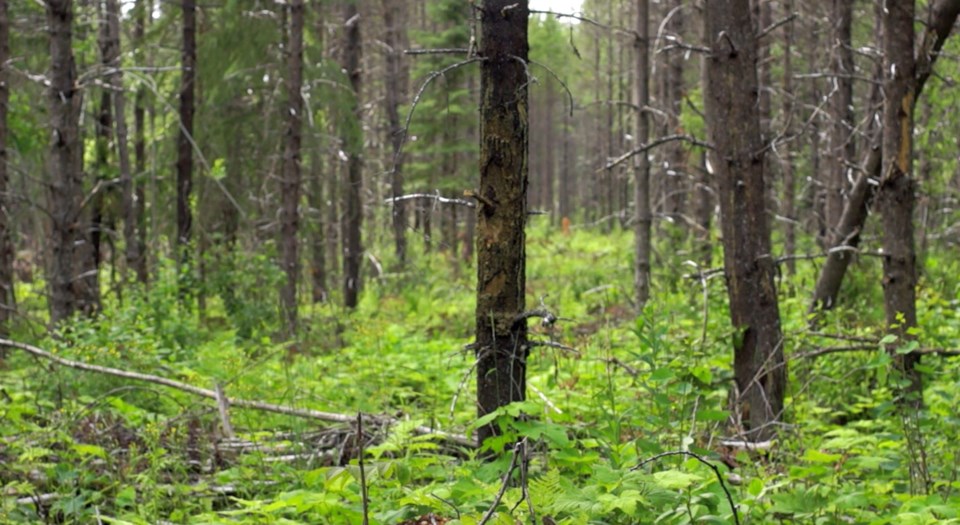Last week, I was out on the logging roads east of town with a local guide outfitter, checking out the cutblocks.
We went out, camera in hand, to illustrate for people how logging practices and reforestation needed to change to help wildlife.
There was a big area near the Bowron River that was intensively logged in the 1980s, a smaller sibling to the massive Bowron Clearcut further south, where we were headed.
They made some big cuts, planted mostly pine, then they sprayed it.
Scott, the guide, remembers helicopter spray camps set up, year after year. Barrels of glyphosate were sprayed on the clearcuts to kill the aspen, birch, and deciduous. A place they regularly hunted was ruined. His dad, a guide in the area since the 1960s, had a new name for it: the Gobi Desert.
We had come expecting to find the result: a 30-35 year old pine plantation that we could complain about. You know the ones -- monoculture pine farms, weird ecological anomalies in what should be mixed spruce country. Single-aged, single-species stands with pine needles and sparse understory, little of it above snow in winter, and maybe the odd aspen that the moose has hammered.
But we were in for a surprise.
One of the cutblocks we had come for, logged in 1989, sprayed twice, the last time in 1998, had been recently “commercially thinned.” It was no longer recognizable as a pine plantation.
Commercial thinning is a new technique in our region. It utilizes nimble, European-style equipment to cut 20-foot wide strips through the plantations, while reaching into the stand on either side of the strips to pick out a certain percentage of the stems.
It’s basically selective logging but of immature plantation stands.
Apparently it is worthwhile. They hadn’t yet hauled out the logs, and there were some decks of some decent size saw and pulp logs.
But the main benefit from what we could see was the habitat and wildfire-mitigation improvement.
The thinning had created an almost immediate bonanza of deciduous wildlife forage for our struggling moose.
After 25 years, the lingering glyphosate contamination had apparently worn off. The aspen were sending up healthy new shoots. Red Osier dogwood was growing like crazy. Rubus species, cow parsnip, and fireweed were shooting up. We could hear birds.
Now I’m not saying this justifies the pine plantation concept. It remains a priority to immediately change how we log and how we reforest. And I’m not saying this thing isn’t still a devalued ecosystem. What I’m saying is we have an economic opportunity to shift the focus of forestry from clearcutting primary forest to fixing up the mess we made.
Given time, and as long as we relax our anti-deciduous mindset, the Gobi desert may flower yet again.
James Steidle is a Prince George writer.


